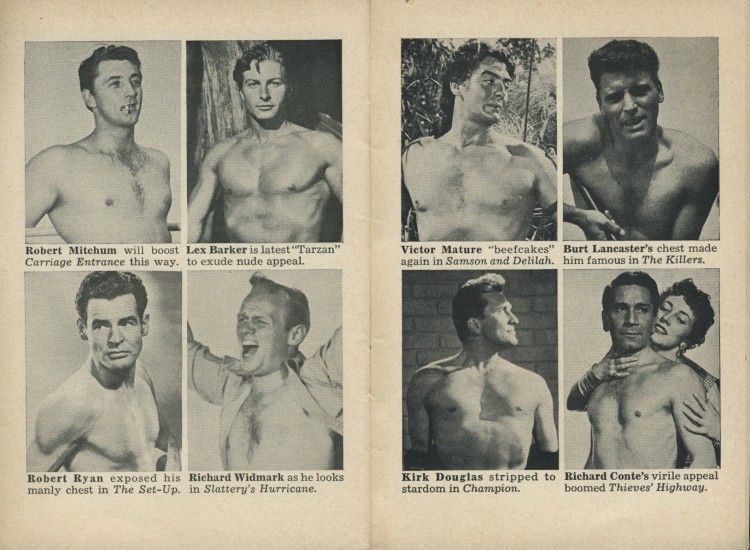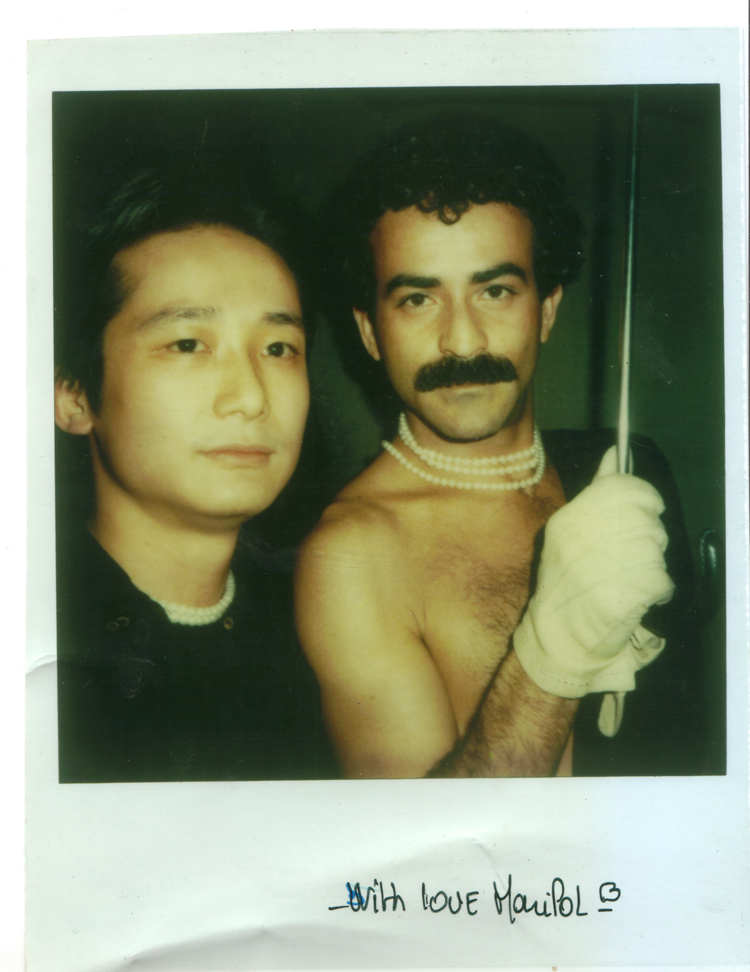The Bloolips were a popular drag performance group from England which took their cues from other drag-focused performance groups like Charles Ludlam’s Ridiculous Theatrical Company and the Hot Peaches. The group’s founder, the brilliant Bette Bourne performed with Hot Peaches on their European tour and then went back to England to form Bloolips. When the group arrived in New York in 1993 to present their show Get Hur, filmmaker Michael Kasino documented their performance and back-stage musings in this quietly thrilling video.
Man in the Streets by

I have always been amazed at the way old clichés about famous towns linger, like the Paris that you see in the latest Woody Allen film, Midnight in Paris, a 1920-ish city of light that never looked that shiny and stupid. Paris is still used for that nostalgia effect, distorted by the bougie state of mind of Woody Allen, a man who can’t seem to direct a flick that doesn’t belong to the blasé rich of the Upper East Side.
My vision of New York is of July 1987 when I fell in love with the man of my life during a heat wave. It was around the same time that house music was having it’s most sincere moment. I was religiously taping Marley Marl’s WBLS mixes. I still own the cherished tapes and they still sound damn good today. When you’re a 29-year-old Frenchman and you discover—and dance—at Better Days, Escualitas, The Saint and the Paradise Garage in one whopper of a night, you fall in love with the guy who got you there, who’s grinning and saying, at the end of the night, “I told you so, honey.” Jim Dolinsky (R.I.P.) was very white but all I was listening in New York in 1987 was either black or latin music. East 4th Street between B & C was the most beautiful place in the world for me and I will never forget the strange chemical smell in the hallway, something that got quickly Pavlovian, as I knew there was pleasure and happiness right behind that door. More…
Men On Film: 1949 by

It’s both funny and sad to think of a time when merely taking off your shirt was enough to excite and stir the masses of closeted gay men, but such was the nature of repression of male/male desire through the course of history. As an example, consider the October 17, 1949 issue of a small magazine called Quick and its cover story “The Birth of Beefcake,” which details the new Hollywood trend of shirtless supermen for its readers. The cover features a smiling photo of the heartthrob Alan Ladd. Inside, the cover story “Hollywood Uncovers Male Appeal” explains the concept of “beefcake”: More…
The Obscene Diary of Samuel Steward by
Last year saw the rediscovery of a major figure whose remarkable story illustrated the secret history of gay life throughout the 20th Century. In Secret Historian: The Life and Times of Samuel Steward, Professor, Tattoo Artist, and Sexual Renegade, author Justin Spring tells the thrilling tale of Sam Steward, a man who documented every one of his many sexual exploits in obsessive detail, providing a wealth of understanding to future generations looking to understand the pre-Stonewall era. Now the artifacts of Steward’s life have been collected and displayed in a brilliant, inspiring show at the Museum of Sex in New York City. Keep the Lights On‘s documentarian Onur Karoaglu asked Justin Spring to show him around the exhibition one morning a few weeks ago. Secret Historian, along with An Obscene Diary: The Visual World of Sam Steward is in bookstores now.
The Precious Moments Are Really Precious: How Victor Hugo Changed My Life by

Fun-loving veteran fashion show and events producer Benjamin Liu came to New York City in 1979 at the invitation of Victor Hugo, a Venezuelan artist with a larger-than-life personality well known throughout the ’70s and ’80s in gay, arts and fashion circles as fashion designer Halston’s lover, muse and window display designer. Hugo was Liu’s tour guide on a rollercoaster ride through the heart of New York City’s most legendary creative period. The trip changed the course of Liu’s life and eventually led to him working for artist Andy Warhol from 1983 to 1986. Warhol passed away a year later and Hugo died in 1993, but Liu still remembers his mentors fondly and remains eternally grateful for the experiences that have shaped him. I met up with him to reminisce about his formative years.
Michael: How did you come to New York?
Benjamin: I came to New York through one friend, Victor Hugo, and I always continually thank him. He signified a whole era. He was a Venezuelan hustler and makeup artist who became a muse to Halston, Andy Warhol and Elsa Peretti. He was Halston’s lover–boyfriend and also a great display person, an artist in his own right and a coke addict. He was famously photographed at Studio 54 in a jock strap, in a celluloid stripped top carrying a women’s purse. At the same time, so manly. He was really like a porn star.
He was sexy to you?
He was sexy to everyone. This was a person who lived at St. Mark’s Baths. More…
Sunday Screening: the last days of the Starlite Lounge by
In New York, change is part of the landscape. Cherished stores, theaters and bars close and neighborhoods are always in flux. Case in point: The Starlite Lounge, Brooklyn’s oldest African-American-owned bar for gay people of color, was founded in 1959, the same year as Brown vs. Board of Education and ten years prior to the Stonewall riots in Manhattan. Mackie Harris, one of New York’s first gay black business owners, wanted to create a safe, non-discriminating establishment for his community in Crown Heights and it remained open for over 50 years. But all of that came to an end last summer when the Starlite Lounge received notice to vacate. Filmmakers Kate Kunath and Sasha Wortzel were intrigued by the story of a beloved neighborhood bar and cultural institution forced to shut its doors. Their new full-length documentary The Starlite Project asks the questions: “How does an institution like the Stonewall survive, but the Starlite cannot? Who decides what cultural and historic landmarks are preserved and what memories can be erased?”
This Sunday, catch a sneak preview of a rough cut of the film with Kunath and Wortzel, followed by a discussion with owners of the Starlite, Gay New York author George Chauncey and other special guests. The screening will take place 6-9pm at the Guggenheim Lab First Park (Houston at 2nd Avenue). For more on the project, visit the site here.
The Pride Parade by
A few days after shooting his Stonewall video on the night in June that the Marriage Equality Act passed in the New York State Senate, our amazing videographer Onur Karoaglu headed over to capture the elation at the Gay Pride Parade where the half-million strong crowd celebrated this amazing stride.
The funniest “superficial, homophobic lesbians” on the planet by
Desiree Akhavan and Ingrid Jungermann have started the first ever comic web-based narrative series about a lesbian couple in Park Slope. In the first episode “Miserable Animals,” The Slope introduces us to Desiree and Ingrid, “superficial, homophobic lesbians.” Like Jonathan Lisecki’s Gayby, Akhavan and Jungermann repurpose the style of deadpan comedy seen in shows like The Office, Parks & Recreation and Curbs Your Enthusiasm with their unique strand of queer humor.
The second episode, in which Desiree and Ingrid compete over who is better looking, will premiere on The Slope’s website on August 15th.
The Pop-Up Museum of Queer History by

Most of us are familiar with philosopher George Santayana’s famous quote that “Those who cannot remember the past are condemned to fulfill it.” But what do we do as gay people when so much of our history is written out of the record books, whether by others or in the case of many of our greatest artists and public figures, by themselves? This Saturday night, at the Leslie/Lohman Gay Art Foundation in New York, the Pop-Up Museum of Queer History will attempt to remedy the situation. More than forty artists are contributing to over twenty different exhibits, focused on subjects like the same-sex marriage debate in Argentina, the “Lady King” Christina of Sweden (who inspired the Greta Garbo classic Queen Christina), lesbian lives from the 1950′s, and late 1800′s responses to trans identity. Participating artists include Rodney Evans, Vaginal Davis, Kate Huh, Jonathan Ned Katz, Sasha Wortzel, Al Belkin, Boris Torres (who’s work is featured in Keep The Lights On), and many more. The opening begins at 6:30PM, and there’ll be a very special “Judy” after party at The Hose immediately afterwards. Don’t miss it – after all, don’t you want to be able to tell people “I was there,” in ten years when a permanent Queer History Museum is finally built? The show runs through August 25th.
The Stonewall Evolution by
In the first of a series of films documenting moments from LGBT New Yorker’s lives, director Onur Karoaglu chronicles the evening of Friday, June 24th, 2011, the night that the landmark marriage equality bill passed the state senate. A crowd of revelers had gathered in front of the legendary Stonewall bar after the annual Drag March through the streets of the village. When the news about the bill’s came across, there was much reason to celebrate. We’re eager to hear from you about how your life has changed since that night, a little over a month ago. Have you gotten married? Bought your friends wedding gifts? Or remain steadfastly single and ready to mingle? Leave a comment below!


